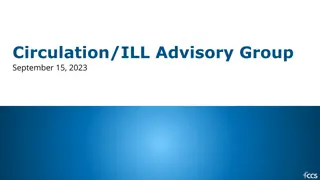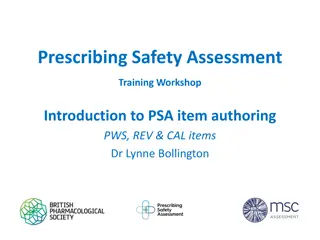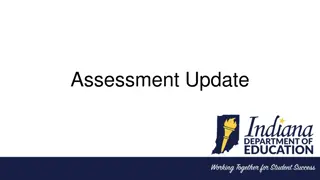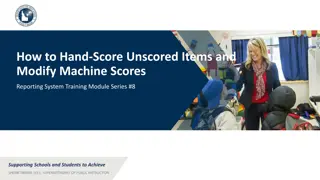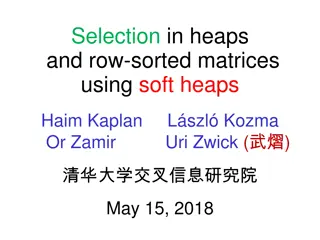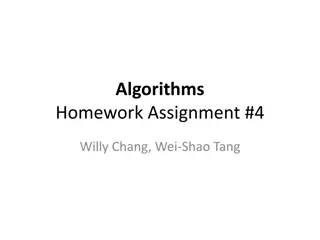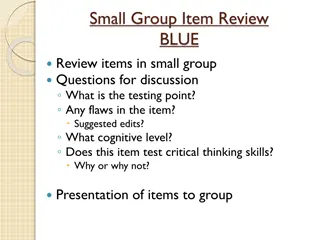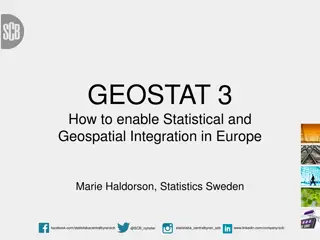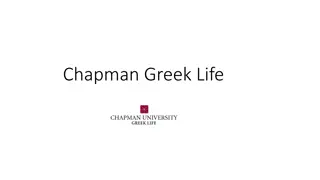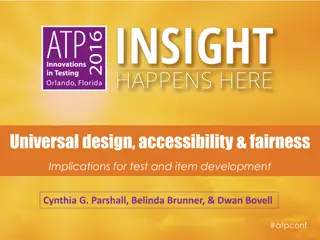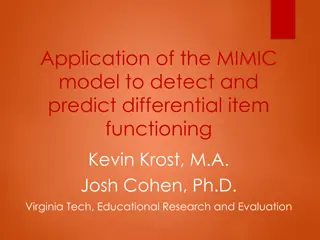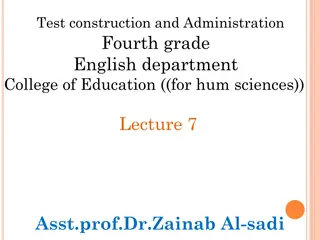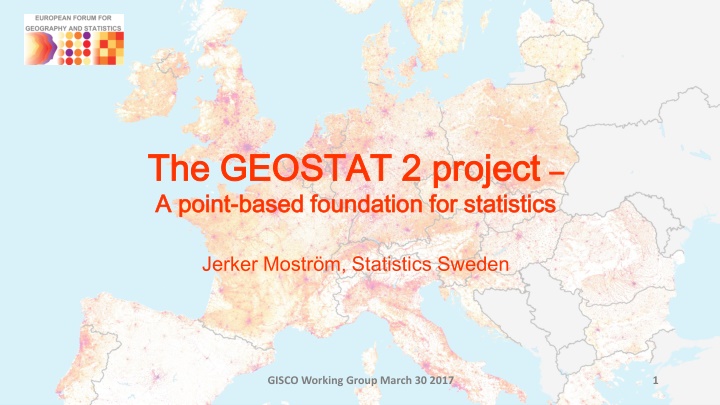
Enhancing Statistical Production Process with Point-based Geospatial Reference Framework
Explore the importance of integrating location data into statistical processes using a point-based foundation, enabling better relevance and efficiency in statistical production. Learn about the proposed model for a geocoding infrastructure in statistics and its implications for future censuses. Dive into the concept of location data units and their role in enhancing statistical analysis and decision-making.
Download Presentation

Please find below an Image/Link to download the presentation.
The content on the website is provided AS IS for your information and personal use only. It may not be sold, licensed, or shared on other websites without obtaining consent from the author. If you encounter any issues during the download, it is possible that the publisher has removed the file from their server.
You are allowed to download the files provided on this website for personal or commercial use, subject to the condition that they are used lawfully. All files are the property of their respective owners.
The content on the website is provided AS IS for your information and personal use only. It may not be sold, licensed, or shared on other websites without obtaining consent from the author.
E N D
Presentation Transcript
http://geo.stat.gov.pl/documents/20182/25200/EFGS+2014.png/cc6a1fc1-232e-4881-9ddc-134453d23e66?t=1396605051547http://geo.stat.gov.pl/documents/20182/25200/EFGS+2014.png/cc6a1fc1-232e-4881-9ddc-134453d23e66?t=1396605051547 The GEOSTAT 2 The GEOSTAT 2 project A A point point- -based based foundation foundation for statistics project for statistics Jerker Mostr m, Statistics Sweden GISCO Working Group March 30 2017 1
http://geo.stat.gov.pl/documents/20182/25200/EFGS+2014.png/cc6a1fc1-232e-4881-9ddc-134453d23e66?t=1396605051547http://geo.stat.gov.pl/documents/20182/25200/EFGS+2014.png/cc6a1fc1-232e-4881-9ddc-134453d23e66?t=1396605051547 The GEOSTAT 2 project Propose a model for a point-based geospatial reference framework geocoding infrastructure for statistics based on address, buildings and/or dwelling registers. A priority of the proposed setup has been the ESS vision of a fully geocoded population census 2021. The model should be considered suitable for statistics in the widest possible sense. GISCO Working Group March 30 2017 2
http://geo.stat.gov.pl/documents/20182/25200/EFGS+2014.png/cc6a1fc1-232e-4881-9ddc-134453d23e66?t=1396605051547http://geo.stat.gov.pl/documents/20182/25200/EFGS+2014.png/cc6a1fc1-232e-4881-9ddc-134453d23e66?t=1396605051547 General conclusions Location needs to be tightly and fully integrated into the statistical production process. A point-based foundation for statistics enables NSIs and the ESS to increase relevance and timeliness of statistics but also to improve efficiency and flexibility of production. A point-based geocoding infrastructure for statistics is the corner stone of such foundation. GISCO Working Group March 30 2017 3
http://geo.stat.gov.pl/documents/20182/25200/EFGS+2014.png/cc6a1fc1-232e-4881-9ddc-134453d23e66?t=1396605051547http://geo.stat.gov.pl/documents/20182/25200/EFGS+2014.png/cc6a1fc1-232e-4881-9ddc-134453d23e66?t=1396605051547 The concept Location data Unit record data ID = 1 ID = 2 ID = 3 ID = 4 ID = 5 GISCO Working Group March 30 2017 4
http://geo.stat.gov.pl/documents/20182/25200/EFGS+2014.png/cc6a1fc1-232e-4881-9ddc-134453d23e66?t=1396605051547http://geo.stat.gov.pl/documents/20182/25200/EFGS+2014.png/cc6a1fc1-232e-4881-9ddc-134453d23e66?t=1396605051547 The concept GISCO Working Group March 30 2017 5
http://geo.stat.gov.pl/documents/20182/25200/EFGS+2014.png/cc6a1fc1-232e-4881-9ddc-134453d23e66?t=1396605051547http://geo.stat.gov.pl/documents/20182/25200/EFGS+2014.png/cc6a1fc1-232e-4881-9ddc-134453d23e66?t=1396605051547 Recommendations 1 Make sure to obtain a good understanding of the expectations and requirements of the users, both externally and internally. Introduction of a point-based foundation for statistics will and should ideally impact several domains of the statistical production chain (from survey design, collection methods, processing techniques, disclosure etc.) Engage the organisation broadly to find out how and where a point-based infrastructure for statistics can improve business processes. GISCO Working Group March 30 2017 6
http://geo.stat.gov.pl/documents/20182/25200/EFGS+2014.png/cc6a1fc1-232e-4881-9ddc-134453d23e66?t=1396605051547http://geo.stat.gov.pl/documents/20182/25200/EFGS+2014.png/cc6a1fc1-232e-4881-9ddc-134453d23e66?t=1396605051547 Recommendations 2 Make a thorough assessment of location data sources that can be potentially used to set up a point-based geocoding infrastructure. Fundamental and authoritative geospatial data from the National Spatial Data Infrastructure should be the first-hand option! Make sure that the provider has a consistent scheme of maintenance to keep the dataset updated and that data is properly described in line with metadata standards or any other official data specifications. GISCO Working Group March 30 2017 7
http://geo.stat.gov.pl/documents/20182/25200/EFGS+2014.png/cc6a1fc1-232e-4881-9ddc-134453d23e66?t=1396605051547http://geo.stat.gov.pl/documents/20182/25200/EFGS+2014.png/cc6a1fc1-232e-4881-9ddc-134453d23e66?t=1396605051547 Recommendations 3 Build formal working relationships with external producers of geospatial information (e.g. NMCAs) as to safeguard long-term provision of data. Cooperation between institutions should ideally rely on (formal) agreements or legislation, but the agreements themselves are no guarantee for a good cooperation! (UN GGIM: Europe) Cooperation with data custodians should entail feed-back routines for reporting and correction of errors found in geospatial information. GISCO Working Group March 30 2017 8
http://geo.stat.gov.pl/documents/20182/25200/EFGS+2014.png/cc6a1fc1-232e-4881-9ddc-134453d23e66?t=1396605051547http://geo.stat.gov.pl/documents/20182/25200/EFGS+2014.png/cc6a1fc1-232e-4881-9ddc-134453d23e66?t=1396605051547 Recommendations 4 Develop a strategy to manage the geospatial data streams in the best possible way. Address human resources needed as well as the technical infrastructure allowing for efficient processing of geospatial data (software, data storage, computing capabilities etc). The goal should be a flexible technical environment and to avoid duplication of data and smooth processes for maintenance. GISCO Working Group March 30 2017 9
http://geo.stat.gov.pl/documents/20182/25200/EFGS+2014.png/cc6a1fc1-232e-4881-9ddc-134453d23e66?t=1396605051547http://geo.stat.gov.pl/documents/20182/25200/EFGS+2014.png/cc6a1fc1-232e-4881-9ddc-134453d23e66?t=1396605051547 Recommendations 5 Develop routines to deal with the temporal aspects of data in order to obtain the best possible temporal cohesion between location data and statistical and administrative data to be geocoded. Develop routines for a uniform approach to geocoding, most notably workarounds to handle erroneous data (address validation tools, homogenisation of address information or interpolation of address location points). GISCO Working Group March 30 2017 10
http://geo.stat.gov.pl/documents/20182/25200/EFGS+2014.png/cc6a1fc1-232e-4881-9ddc-134453d23e66?t=1396605051547http://geo.stat.gov.pl/documents/20182/25200/EFGS+2014.png/cc6a1fc1-232e-4881-9ddc-134453d23e66?t=1396605051547 And remember The creation of a geocoding infrastructure for statistics does not absolutely require a big-bang approach and a complete redesign of enterprise architectures, production processes and legislation inside and outside NSIs! Small and stepwise improvements are possible. GISCO Working Group March 30 2017 11
http://geo.stat.gov.pl/documents/20182/25200/EFGS+2014.png/cc6a1fc1-232e-4881-9ddc-134453d23e66?t=1396605051547http://geo.stat.gov.pl/documents/20182/25200/EFGS+2014.png/cc6a1fc1-232e-4881-9ddc-134453d23e66?t=1396605051547 A starting-point for modernisation To design geospatial work flows that can serve multiple statistical domains, a broad understanding of the different roles that geospatial data may play in the statistical production is needed. The project advocates NSIs to use existing business models and frameworks, e.g. the GSBPM and the Global Statistical Geospatial Framework (SGF), as tools to start fleshing out how to set up, or improve, cross-product solutions for geospatial information suitable for their particular business conditions. GISCO Working Group March 30 2017 12
http://geo.stat.gov.pl/documents/20182/25200/EFGS+2014.png/cc6a1fc1-232e-4881-9ddc-134453d23e66?t=1396605051547http://geo.stat.gov.pl/documents/20182/25200/EFGS+2014.png/cc6a1fc1-232e-4881-9ddc-134453d23e66?t=1396605051547 The final report Main report explaining concepts, providing recommendations Annex 1. Use cases (linked to recommendation in the main report) Annex 2. Results from national exercises on assessing the GSBPM to structure management of geospatial data in production + recommendations for revision of the GSBPM Annex 3. Ten-point-guide to use the GSBPM Annex 4. Detailed proposals for improving the GSBPM GISCO Working Group March 30 2017 13
http://geo.stat.gov.pl/documents/20182/25200/EFGS+2014.png/cc6a1fc1-232e-4881-9ddc-134453d23e66?t=1396605051547http://geo.stat.gov.pl/documents/20182/25200/EFGS+2014.png/cc6a1fc1-232e-4881-9ddc-134453d23e66?t=1396605051547 Download the complete report + annexes from EFGS.info! GISCO Working Group March 30 2017 14
http://geo.stat.gov.pl/documents/20182/25200/EFGS+2014.png/cc6a1fc1-232e-4881-9ddc-134453d23e66?t=1396605051547http://geo.stat.gov.pl/documents/20182/25200/EFGS+2014.png/cc6a1fc1-232e-4881-9ddc-134453d23e66?t=1396605051547 Thank you! On behalf of the GEOSTAT 2 project consortium: Marie Haldorson, Jerker Mostr m & Karin Hedeklint (Sweden) Erik Engelien & Ola Nordbeck (Norway) Rina Tammisto (Finland) Vincent Loonis (France) Ingrid Kaminger (Austria) Amelia Wardzi ska-Sharif (Poland) Ana Santos (Portugal) GISCO Working Group March 30 2017 15








